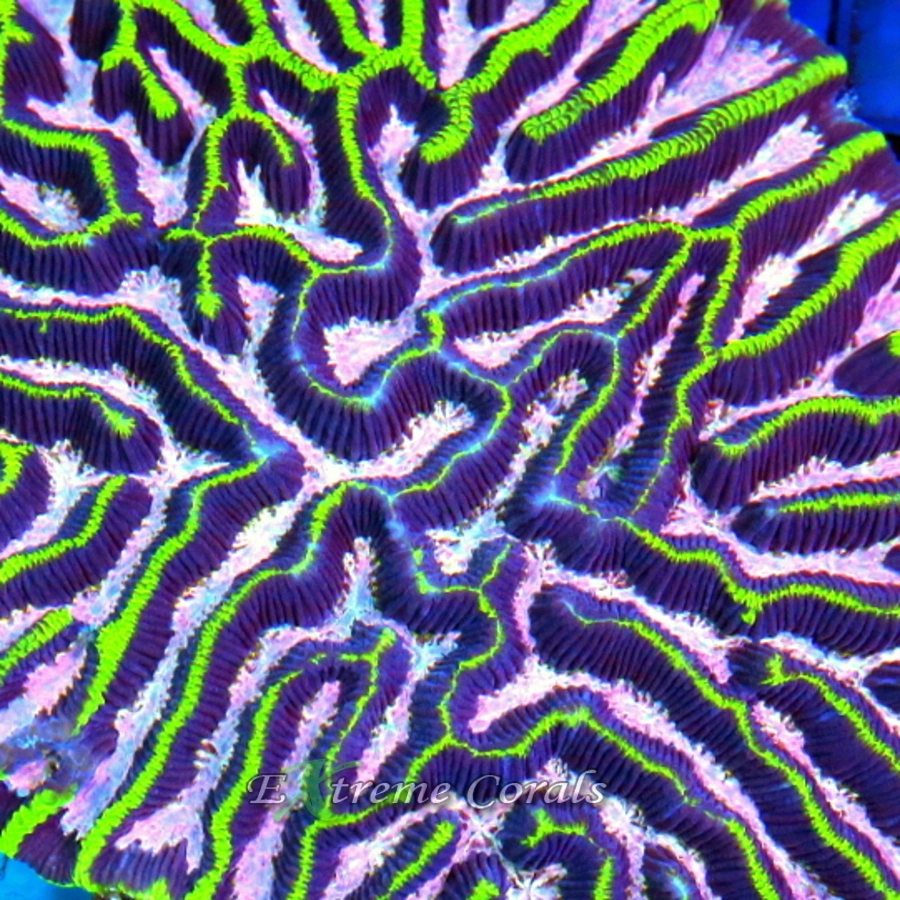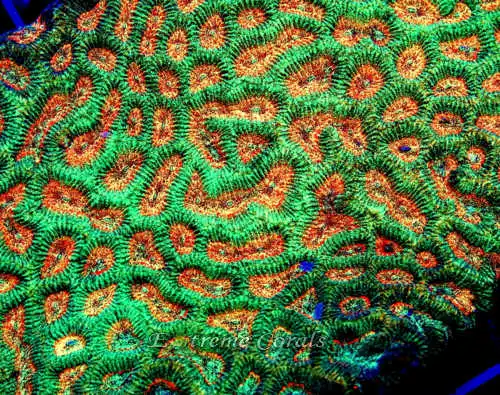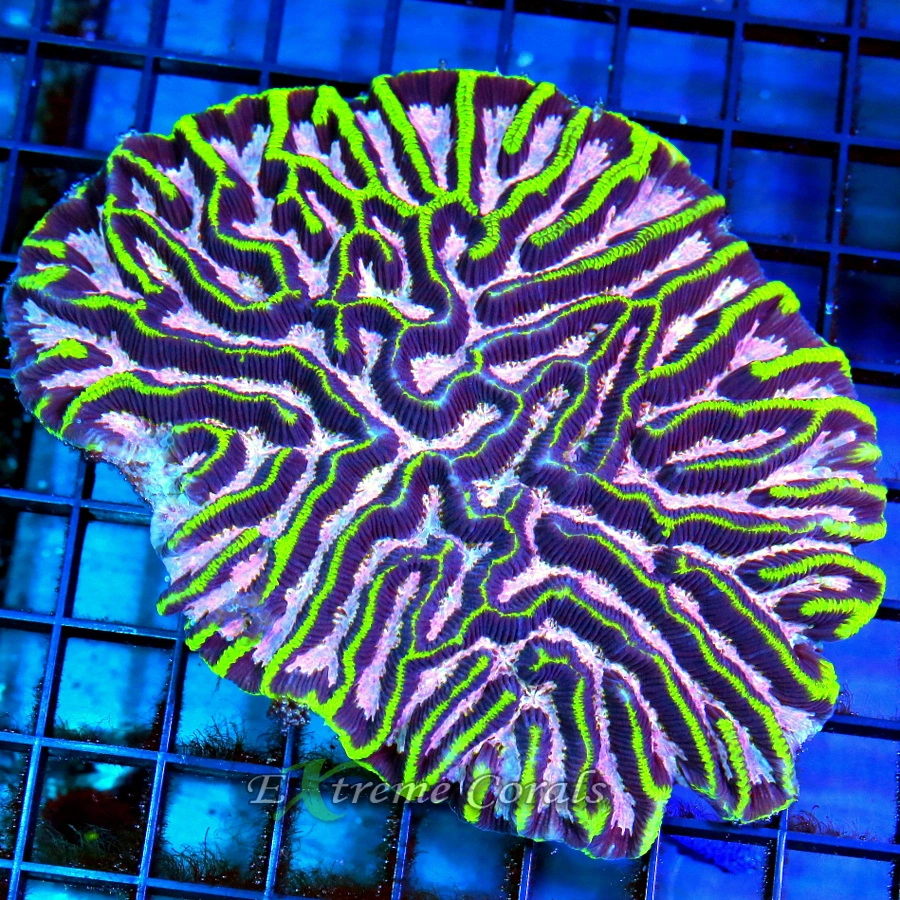Extreme Corals News and Updates
Fascinating Facts About Platygyra Coral You Probably Didn't Know
Discover intriguing facts about Platygyra coral in our blog 'Fascinating Facts About Platygyra Coral You Probably Didn't Know'.
Platygyra coral, also known as brain coral. This vibrant species enhances marine biodiversity and adds beauty to coral reefs in the Indo-Pacific.
by scott Shiles • May 16, 2024
What is Platygyra Coral?

Platygyra coral, also known as brain coral, is a type of hard coral found in the oceans. It gets its name from the ridges and grooves on its surface that resemble a brain's folds. Platygyra coral comes in various colors, from vibrant greens to earthy browns, adding to the beauty of coral reefs. This species of coral plays a crucial role in marine ecosystems by providing habitats for marine life and contributing to reef structures.
Habitat and Distribution of Platygyra Coral
Platygyra coral are commonly found in the shallow waters of the Indo-Pacific region, including areas like Australia, Indonesia, and Fiji. These corals prefer to inhabit clear, warm waters with moderate to high water flow. They often settle on rocky surfaces or sandy substrates, forming large colonies. Platygyra coral colonies can be found at depths ranging from shallow intertidal zones to about 98 feet (30 meters) below the surface.
Physical Characteristics of Platygyra Coral
Platygyra corals have a distinct dome-shaped appearance with valleys and ridges on their surface. These corals can vary in color, showcasing hues of green, brown, or even a neon-like glow under ultraviolet light. The size of a single polyp on this coral is generally between 0.8 to 1.5 inches in diameter.
Reproduction Process of Platygyra Coral
Platygyra corals reproduce both sexually and asexually. They can produce larvae that settle and grow into new colonies, or they can clone themselves by budding new polyps. Fragmentation, where a piece of coral breaks off and forms a new colony, is another common method of asexual reproduction. Sexual reproduction occurs through the release of eggs and sperm into the water, leading to fertilization and the development of new coral colonies.
Importance of Platygyra Coral in Marine Ecosystems
Platygyra coral plays a crucial role in marine ecosystems. Here are some key points to understand its importance:
Platygyra coral contributes to the biodiversity of marine life by providing habitat and shelter for various marine organisms.
This type of coral helps maintain the balance of the marine ecosystem by supporting the food chain and promoting ecosystem resilience.
Platygyra coral also plays a part in coral reef formation, which is essential for protecting coastlines and providing a home for a wide range of marine species.
Threats and Conservation Status of Platygyra Coral
Platygyra coral faces many threats in the wild, including climate change, ocean acidification, overfishing, and pollution. These factors contribute to the decline of coral reefs, impacting the health of Platygyra coral populations.
Conservation efforts are crucial to protect these corals. Despite their resilience, Platygyra corals are vulnerable to environmental changes. Conservation organizations work to preserve coral reefs and raise awareness about the importance of these ecosystems.
Fascinating Adaptations of Platygyra Coral

Platygyra coral has some amazing adaptations that help it thrive in its environment. These corals can adapt to changes in their surroundings by changing the color of their tissues. They also have a unique skeletal structure that provides them with protection and support. Platygyra coral can form symbiotic relationships with algae, which help them obtain essential nutrients through photosynthesis. This coral species can even adjust its growth patterns depending on the availability of light and water flow.
Unique Behaviors of Platygyra Coral
Platygyra corals have a fascinating ability to absorb nutrients not just from their tentacles, but also from their mouths. This unique behavior allows them to gather food efficiently and adapt to their surroundings. Platygyra corals can also change their appearance depending on the environment they're in, showcasing stunning colors and patterns as a way to blend in or stand out. Additionally, these corals can release a sweeper tentacle to defend their territory against neighboring corals, displaying a remarkable defensive strategy.
Human Interaction with Platygyra Coral
Human interaction with Platygyra coral can harm these delicate organisms. Decorating aquariums with Platygyra coral might seem appealing, but it's crucial to ensure that they are sustainably sourced. Additionally, excessive handling or touching of these corals can lead to stress, affecting their health. Avoid impacting their natural habitat or extracting them from the ocean as it can disrupt the ecosystem and endanger their survival.
Concluding Remarks on Platygyra Coral
Before we end, let's recap some key points about Platygyra Coral. Platygyra corals are known for their unique brain-like appearance and beautiful colors, making them popular LPS Corals among reef enthusiasts. They are relatively easy to care for and can thrive in various tank conditions. Remember to provide them with proper lighting, water flow, and stable water parameters to ensure their well-being. Additionally, regular monitoring and maintenance are essential to prevent potential issues. Platygyra corals can bring a stunning and dynamic element to your reef tank, making them a delightful addition for any coral enthusiast.
--

